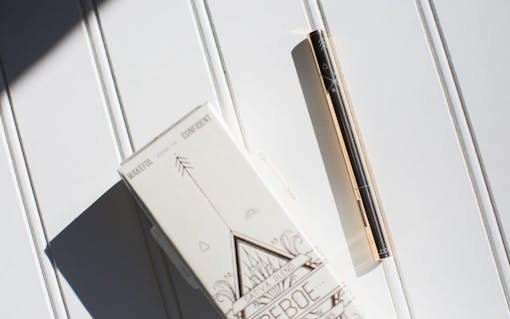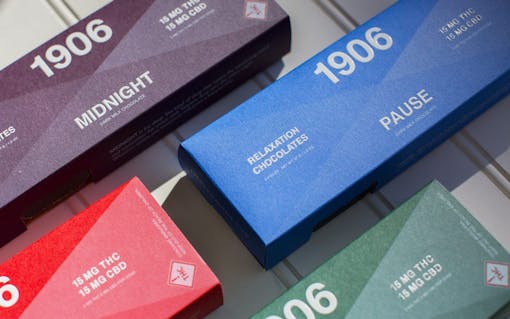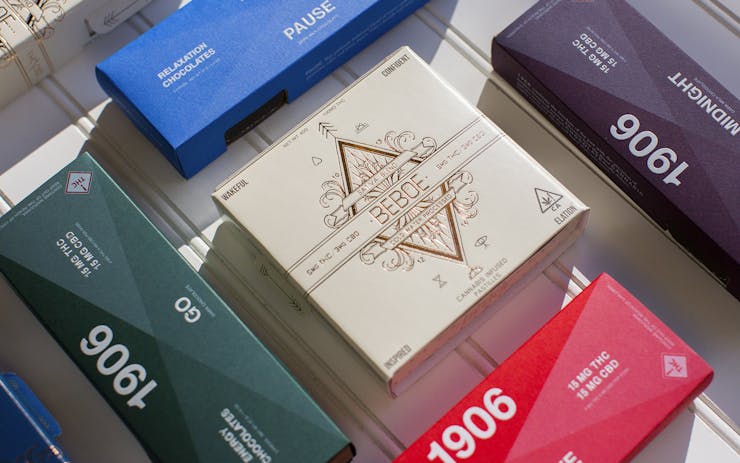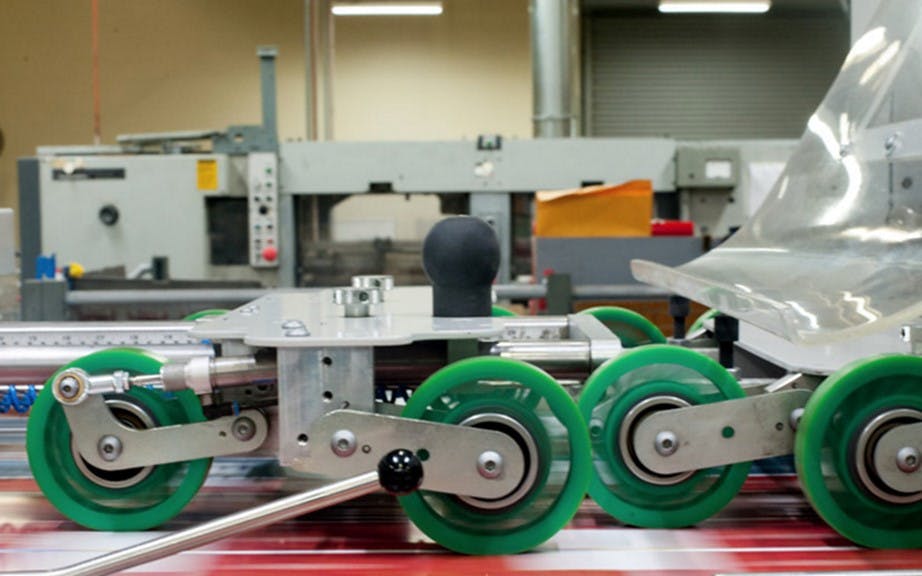This article is sponsored by Sun Grown Packaging. Sun Grown Packaging’s 3e CRP is the first compostable and recyclable child-resistant package for cannabis. The plastic-free package conforms to ASTM D3475, satisfies the standard for “special packaging” as set forth in the Poison Prevention Packaging Act of 1970 Regulations (16 C.F.R. §1700.1(b)(4)) and is made from renewable resources.
When it comes to developing cannabis packaging, things are only getting more complicated. Packages have to meet child safety guidelines and leave room for increasingly copious labelling. But packages are also a marketing tool, drawing attention and telling consumers about a product before they’ve even read a word.
It takes practice to walk that thin line, which is why Sun Grown Packaging has devoted itself to producing packaging solutions unique to the cannabis industry. We sat down with Sun Grown exec Rob Nachtwey to talk about what his clients need, how the field is evolving, and what exactly happens during a packaging compliance test.

Well-designed packaging can complement the products within. (Julia Sumpter/Leafly)
Talk about how Sun Grown Packaging got into cannabis packaging business?
The team at Sun Grown has developed and manufactured packaging in California’s Bay Area for almost 40 years. As we entered the cannabis space in 2014, it became clear a unique set of solutions would be needed. There are many demands and regulations on cannabis packaging, as well as the need to create a brand for these products and promote the companies who are making it happen. Creating Sun Grown Packaging is our way of honoring these needs through a company integrated with the industry and dedicated to its growth and evolution.
No one wants cannabis packaging to be the next water bottle.
What are some of the needs that are particular to the cannabis industry?
A key consideration we identified early on is child-resistant packaging, which we wanted to develop in line with our company mission of sustainability. And we think that’s particularly important in this industry, because no one wants cannabis packaging to be the next water bottle. We took the extra time, cost, and care to develop a unique non-plastic solution which meets the highest international standards for child-resistance using only recycled and compostable materials.
You’ve only been at this since 2014, but that’s kind of a long time for this industry. What’s changed since you started?
For a lot of cannabis products, you were seeing stuff initially that wasn’t really much of a step up from that old standard, the plastic sandwich bag. These days, customers expect more sophistication. Now that there are so many options on dispensary shelves, the packaging has to do a lot more work for their company and its brand image. Packages have to convey information about the products inside and also cover the required compliance info. This includes testing results and government warnings along with other information dictated by new regulations.
Today, a package has to help tell the story of the product and why a consumer should select that product over all of their other choices. But that competition also presents a great opportunity to educate consumers about the value of your product and why your brand should mean something to them.

Sun Grown Packaging works closely with clients like Beboe to develop packaging that complies with regulations and still catches shoppers’ eyes. (Julia Sumpter/Leafly)
How do you identify what a specific client or product is going to need from their packaging?
Well, I like to start the process by listening to the client. It’s key to understand their story, their values, and their customer base. A high-end, foil-stamped package is going to work for some companies; others are going to be better served by more low-key, pharmaceutical style graphics. Because the package is an extension of their brand, consistency across product lines is really important.
Can you recall a company you’ve worked with closely on identifying that brand identity and reflecting it their package?
One that springs to mind is Beboe, who we worked with to develop a truly unique solution. It’s the first child resistant package with stamped foil directly on the corrugated material. It wasn’t easy to do, but these graphics help tell their story. Immediately, the package conveys a level of sophistication, and signifies a high-end product that is presented with care. And differentiation on the shelf is really important; if there are 20 similar products displayed at a dispensary, yours has to jump out.

Thoughtful packaging design can help consumers not only identify brands, but differentiate between their offerings. (Julia Sumpter/Leafly)
Yeah, I mean, we all try not to judge a book by its cover…
Sure, but a good cover can help draw the eye, right? One way to think of a package is as a blank canvas to tell the story of your product. Take another client of ours, Nuka Enterprises. We worked with them to present their 1906 line, which consists of 4 different types of cannabis-infused chocolates. Each edible is tailored to provide a specific experience, which are conveyed through custom-colors for each product in the line.
If there are 20 similar products at a dispensary, yours has to jump out.
Do you see the industry going that way? Towards a more experiential focus, rather than sort of old-school vanilla getting high?
I really do. We’re seeing a move away from the ‘maximum THC per dollar’ paradigm, and towards one with balanced products which target a desired experience to help people feel better in specific ways. Packaging is a great way to help customers understand those differences—between, say an edible that you can enjoy after work like a glass of wine to relax, another formulated to give you energy, and another to help promote sleep. The possibilities are endless.
And obviously it’s easier to focus on that marketing end of things when you already know you’re the package is going to pass muster. Walk us through what you go through to ensure packaging meets regulatory standards?
Well, first we developed several structural prototypes to learn what will be able to hold the unique cannabis products in place and present them in an elegant way. It must also be durable enough to pass the compliance testing, and the product must be manufactured efficiently. Once a packaging solution is developed, we submit it to an independent third party for child resistance protocol testing. And they’re testing not only to make sure that it’s resistant to children, but also that it’s easy enough for adult consumers to open. The packages are presented to groups of children and adults with a given time limit. For the package to pass, 80% of children can’t open them, and 80% of adults can.
What are these packages surviving during the tests?
Oh, man, you name it. The testers are told to use any means necessary to open the package without using a tool. When you say that to a five-year-old, they take you at your word. When you see a package that’s child resistant, that means it has survived attempts to rip it, to chew through it, to break it open by throwing it across the room. The tested packages go through a lot.
And packages change and evolve during that process. They usually go through a couple rounds of iteration and testing, because we don’t just want to take the first passing grade—we want to go to market with the most reliable, effective package we can produce. That’s what let us get to 100% compliance on both the child and adult ends of our latest round of testing.
Are test results the only factor driving that iteration?
Definitely not. Our packages are also heavily influenced by feedback from clients and customers. We’re always working to improve our designs, and we do that by listening to the people who are actually using the product. They are seeing the products in a different way and can help you identify, iterate, and improve.
How are changes based on client feedback different from those you make with testing in mind?
From the beginning, we heard how important it is for customers to be able to see the product. That meant we had to create a window that’s still strong enough to pass these tests. There’s no doubt that’s a challenge, because it’s a pretty unique feature in child-resistant packaging. But when it comes to products like flower, vape oils, and concentrates, it’s really important that consumers be able to see what they’re getting, so we made that happen because it’s something our partners needed.







